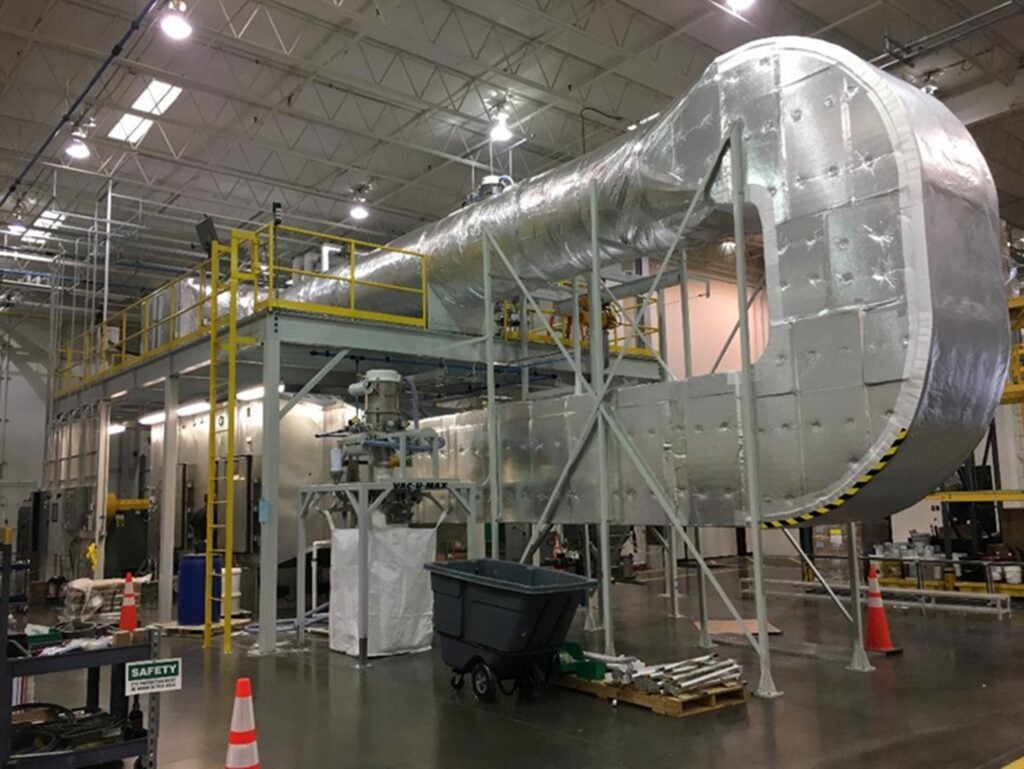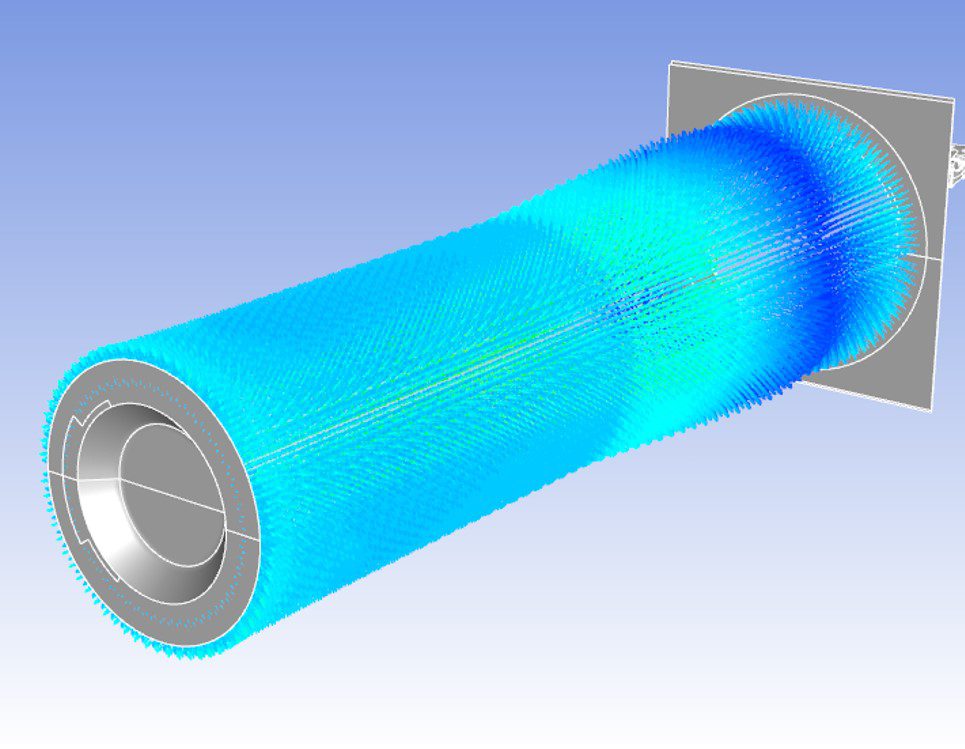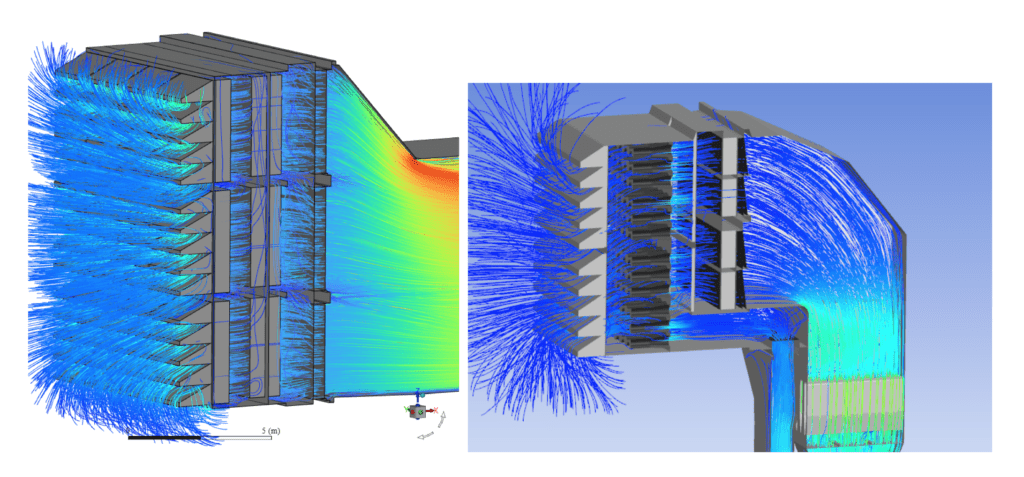Realize the Opportunity from Advanced Air Inlet Filtration
For maximum efficiency and operational flexibility, advanced gas turbines have rightly been optimized to the nth degree. However, there are big opportunities in important related components like the air inlet filtration systems too. The latest developments from Parker Hannifin show what can be achieved when a new approach is taken.
Today’s advanced gas turbines are a technological marvel in which no area has been spared a lengthy process of intense optimization. By applying the same rigorous approach to the improvement of ancillary elements like the air inlet filtration system, big gains on both capital and operational costs can also be made. The latest developments from filtration specialists Parker Hannifin are helping plant owners realize this opportunity.
A six-year, multi-million-dollar research and development program focusing on reducing the size of the filter house has led to a range of fundamental design changes. However, while these changes result in significant capital cost savings, they do not negatively impact the characteristics of the air flow into the gas turbine. A filter system with a significantly smaller footprint, but which retains the same unmatched performance, can be smaller, lighter, and cheaper.
This approach also ensures that all the associated support structure can be shrunk and ultimately allows for a big reduction in the use of costly materials like steel in the filter house and the civil infrastructure that supports it. Logistical and installation costs are also reduced. By slashing the use of materials like concrete and steel, the approach simultaneously helps to minimize the environmental footprint of a gas turbine installation too.
Offering capital expenditure savings of up to 30% on large machines on the filter house alone, the filtration development—done in partnership with a major turbine original equipment manufacturer (OEM)—means substantial cost savings are possible.
Optimizing the Use of Space
For the power generation market, the approach historically has been to keep pressure losses to a minimum in the filter house and any of the other systems upstream of the gas turbine (GT). Even small increases in pressure loss may represent a reduction in GT efficiency and, ultimately, a lower specific output.
However, in the offshore market, different drivers and space constraints mean that compact filter houses are more prevalent. These filtration systems are compact, and therefore more likely to operate at higher air velocities, and thus, potentially a higher pressure loss through the filter house.
However, Parker Hannifin’s research and development (R&D) investments have been designed to leverage the company’s offshore experience in making filter systems that run faster by bringing that to bear on the power generation market. For the power generation sector, that has resulted in the option of either a significantly smaller filtration system or a longer filter life while ensuring that the pressure losses don’t increase in comparison with more conventional systems.
Key developments in self-cleaning filter design have focused on reducing dead space in the filter house by packing filters close together, increasing the available filtration area in a given volume, and improving the flow distribution along the length of the filter compared to the industry standard “cone and cylinder” cartridge filter. In parallel to this, substantial research has been carried out on the filter cleaning system (Figure 1) to ensure that optimal pulse cleaning is still achieved. Particulates accumulating in the filter media are dislodged by the pulsing system, after which they fall to the floor and are collected for disposal. The filters are pulsed in a sequence and the dust is collected in a hopper at the bottom and then removed either with another compressed air system or with a screw auger.

This kind of system requires some space for the particulates and other material to be removed from the filters, which restricts the maximum filter packing density achievable. It requires a delicate balancing act between serviceability and compactness. Much of the R&D effort has, therefore, been focused on sophisticated analysis, not just of the filtration cartridges (Figure 2), but also on the related ancillary systems such as the compressed air pulsing system and related components like the nozzle design.

Given that the most compact packing doesn’t always result in an optimal solution when considering all of the other system requirements, many years of testing and design validation were required to ensure the Parker Hannifin solution delivered the necessary performance from a much more compact footprint. The result is almost a doubling of filter density but with the same cleaning efficiency as a traditional design.
Improving Ancillary Systems
Alongside the development of new filter elements, a number of other changes have also been undertaken. Among those areas to have faced redesign is the weather hood, which is used to prevent water ingress into the turbine.
This large canopy arrangement acts like a series of louvres that deflect any precipitation. The air flow entering the filter house has to go upwards before it can go along the intake, and this helps prevent water droplets being carried into the filter house.
However, as the more compact filter house is smaller, the air velocity in the filter house is generally higher and there is also a shorter stack of weather hoods for the same compact design considerations. Higher velocities increase the risk that water droplets are carried through on the airstream.
To compensate for this potential issue, in the new design, the weather hoods protrude further away from the filter house in order to make sure that the upward flow velocity isn’t higher than those seen in the previous design. Using a different geometry, the weather hoods have been made deeper, but each individual hood is no higher and there aren’t as many. While some rain droplets will strike the hood and run off, they can’t be carried up into the weather hoods because the revised design means the velocity is not high enough.
Depending on the environment, for example, in locations with frequent foggy or misty conditions, as well as the weather hood, there may be a coalescing filter—a very open weave material designed to catch any smaller water droplets that are carried upwards—positioned within the hood. This filter helps the droplets merge with others, then drop out again rather than being carried downstream. Again, Parker Hannifin had to re-engineer an existing system for this particular application.
Another system commonly found within a gas turbine intake is an evaporative cooler used to increase the density of the charge air and improve engine efficiency. The evaporative cooling system features a material reminiscent of a paper honeycomb. After exiting the filtration section, the airflow goes through the individual channels within this honeycomb structure and water, which drains down through the material, is used to cool the inlet air.
The market in terms of media design and performance has been unchallenged for many years. Under the comprehensive Parker Hannifin R&D program, a lot of work was done on the actual efficiency of the cooling material itself, looking at the way the media was manufactured and coming up with new designs for the air channels.
Again, because of the increased airflow velocity, there is an increased risk of water droplets being stripped off the media and carried downstream into the turbine. Given that the evaporative cooling system sits downstream of the filter elements, that’s generally undesirable. Higher airflow velocities can also impact the cooling efficiencies of the evaporative system. Significant testing was undertaken at these higher flow speeds to prove that these system changes wouldn’t introduce a new problem.
Further Optimization Opportunities
With a far smaller footprint, yet, comparable performance, new filtration developments from Parker Hannifin offer GT OEMs and packagers the opportunity for smaller, lighter, and therefore, lower-cost solutions, saving both capital and reducing the environmental cost of an installation. This new approach can save up to 30% for large machines on the total cost of a filter house, logistics, installation, and associated civil engineering works.
As impressive as these figures are, the research program may yet yield even greater things (Figure 3). Indeed, this extensive R&D program has expanded the knowledge frontier of filter aerodynamics, and what can and can’t be influenced by challenging specifications and optimizing filter technology. Possibly, rather than trying to go further in terms of size reduction, there may be additional opportunities in expand these breakthroughs to other sectors of the market.

The technology that has been developed so far is focused on new unit installation, but Parker Hannifin has also been looking at where they may be able to apply the same learnings to provide similar benefits to existing installations. As operators look for higher-efficiency operations, upgrades in GT technology sometimes means higher air flows. Replacing the filter and intake system can be prohibitively expensive, but implementing some of the new Parker Hannifin products and technology may help solve the problem within the confines of the existing filter house. Also, pressure loss reductions, extension of filter life in line with gas turbine maintenance schedules, more efficient systems, and different designs of filters potentially give a performance improvement. There’s a world of opportunities for improvement. After all, optimization is a journey not an end point.
—Kate Taylor is principal engineer for Parker Hannifin Ltd.’s Gas Turbine Filtration division, and Gerald Woodward is division global marketing manager for Parker Hannifin Ltd.’s Gas Turbine Filtration division.